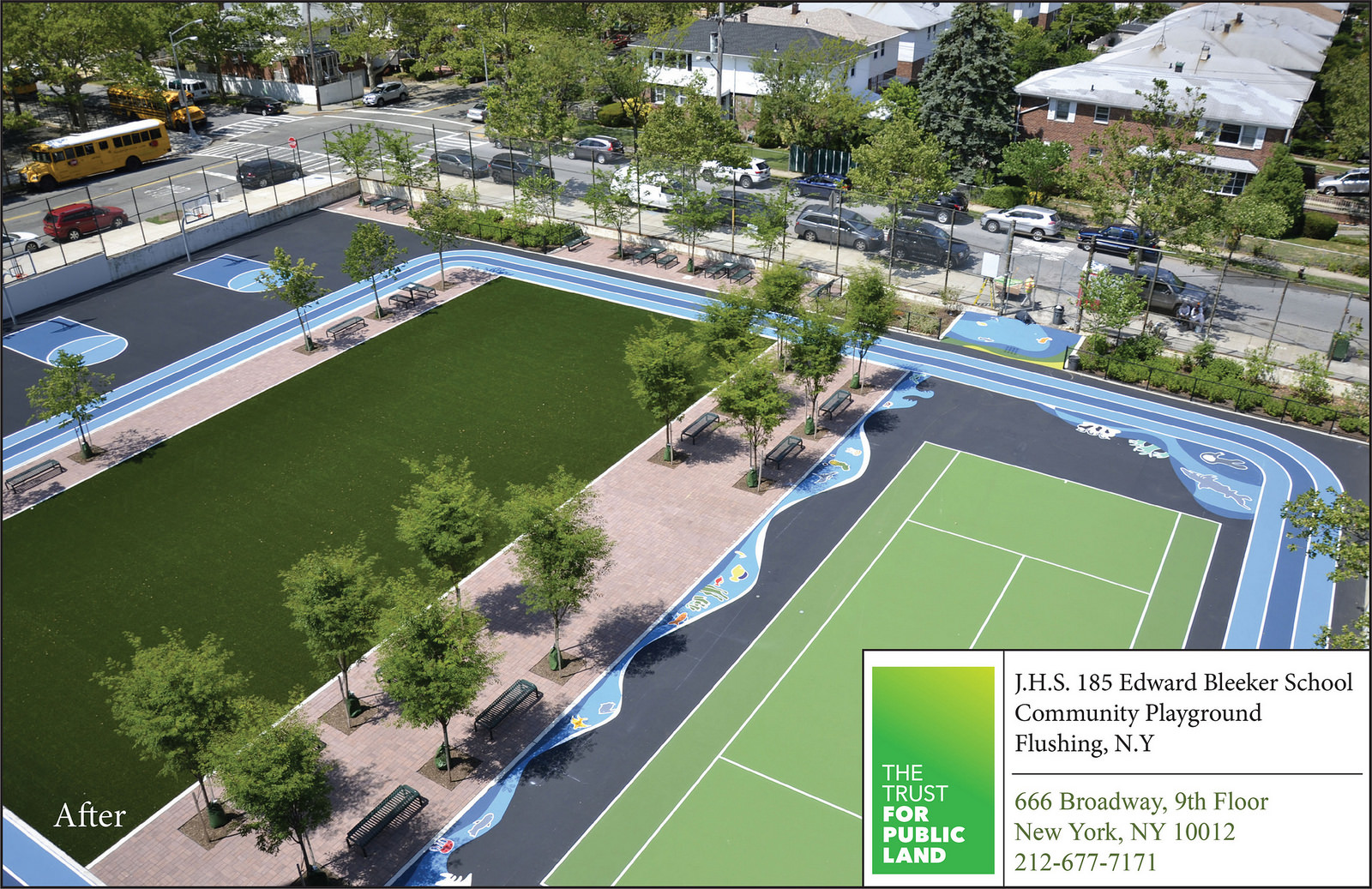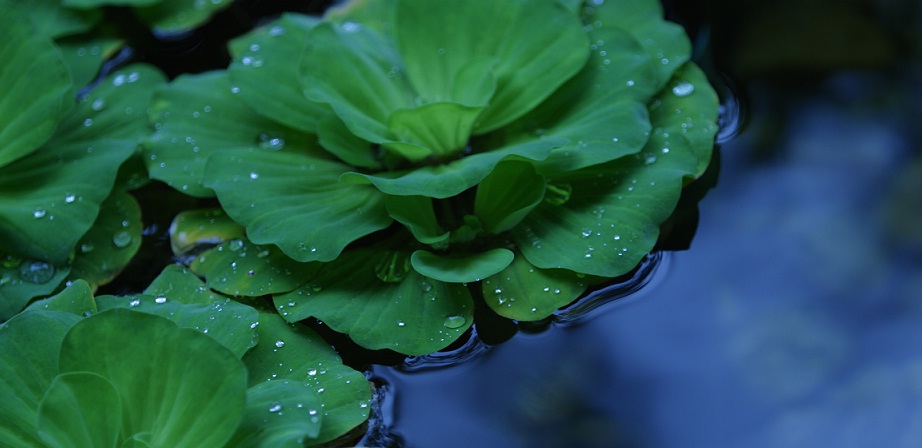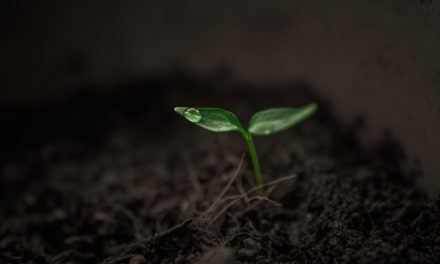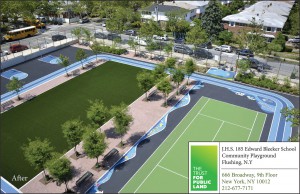
A 0.5-ha (1.2-ac) asphalt lot at the Edward Bleeker Junior High School has been transformed into a playground capable of capturing more than 4164 m3 (1.1 million gal) of stormwater each year. (Credit: Tim Schenck)
The upgraded Edward Bleeker Junior High School playground does more than offer students a new outdoor area to enjoy, it captures some serious stormwater.
Green infrastructure elements reduce stormwater
A 0.5-ha (1.2-ac) asphalt lot at the school has been renovated with green infrastructure elements capable of capturing more than 4160 m3 (1.1 million gal) of stormwater each year, according to a joint New York City Department of Environmental Protection (DEP) and Trust for Public Land (San Francisco) news release.
The renovated playground features an artificial turf field made of woven polyester filaments. The field sits on top of a stone stormwater storage system equipped with perforated distribution pipes to promote infiltration.
“Artificial turf fields typically capture more [stormwater] than often compacted natural grass playing fields,” said Mary Alice Lee, director of The Trust for Public Land’s New York City Playgrounds Program. “There is a backup overflow system that connects the infiltration system to the city’s sewer system in the event of severe rain events.”
Trees, porous pavement, pervious pavers, three rain gardens, and specialized planting round-out the playground’s other stormwater-capturing features. Students also can enjoy the new running track; basketball, tennis, and handball courts; water fountain; benches; outdoor classroom; and color seal art designed by the students, the news release says. A sign with graphics explains stormwater elements and other signs educate about trees, plants, birds, and butterflies, Lee said.
Building a playground for the community
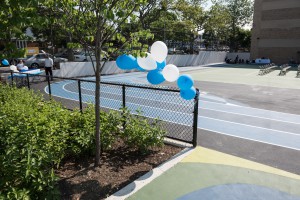
The Edward Bleeker Junior High School now has an artificial turf field that sits on top of a stormwater storage system, trees, porous pavement, and three rain gardens, in addition to new playground equipment and activity areas. (Credit: Tim Schenck)
The playground was designed with help from the school’s students, parents, and teachers, as well as the surrounding community.
“[They] took part in a 3-month participatory design process where they created a wish list, voted on priorities, analyzed existing site conditions, and worked with to-scale models to come up with a design that met the unique needs of the school and community,” Lee said.
Community members also will have the chance to enjoy the playground which will operate as public open space during weekends, holidays, and school vacations. In addition to providing new green recreational space, the renovation will help improve the health of the nearby Flushing Creek and Flushing Bay.
The Trust for Public Land chose the space for a new park through a system that uses geographic information system (GIS) data to identify areas in mid- to low-income neighborhoods lacking adequate park space, Lee said. These areas are compared to the DEP’s priority watershed areas for combined sewer overflow (CSO) abatement. The Flushing Bay watershed has been designated as a priority area by the DEP, Lee said.
Public-private partnership helps green New York’s schools
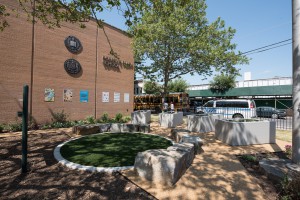
The Robert E. Peary School’s playground received a green infrastructure upgrade that will capture about 1419 m3 (375,000 gal) of stormwater. (Credit: Tim Schenck)
The playground renovation was funded through a public-private partnership, with funds raised by The Trust for Public Land from Charina Endowment Fund, as well as the New York City Departments of Education and Environmental Protection and School Construction Authority. The total cost of the playground is nearly $1.1 million, including $765,000 for construction and $333,000 for design, community engagement and environmental education, the news release says.
Since 2013, the Trust for Public Land has partnered with DEP to open nine green infrastructure playgrounds that feature permeable pavers, trees, gardens, and stormwater-capturing turf fields. In addition to the Edward Bleeker school playground, this summer the organizations also opened another playground at the Robert E. Peary School in the Ridgewood neighborhood of Queens that will capture about 1419 m3 (375,000 gal) of stormwater each year, said Joan Keener, Trust for Public Land New York City Playgrounds program manager.

